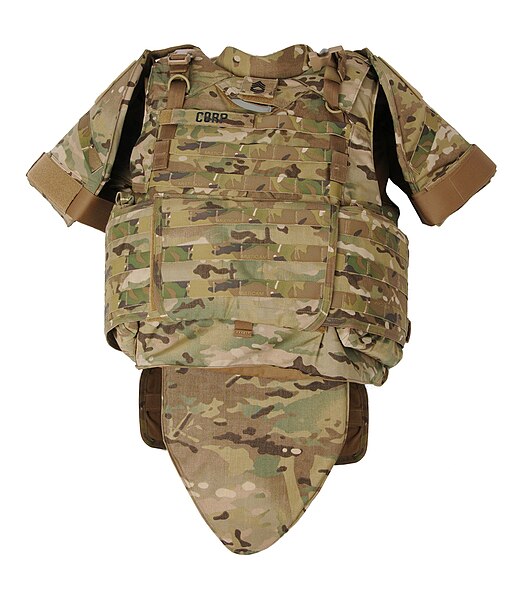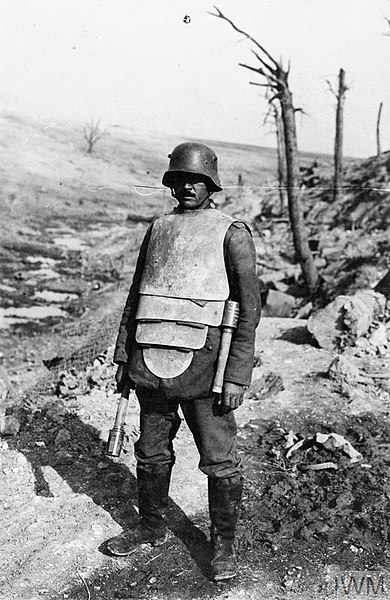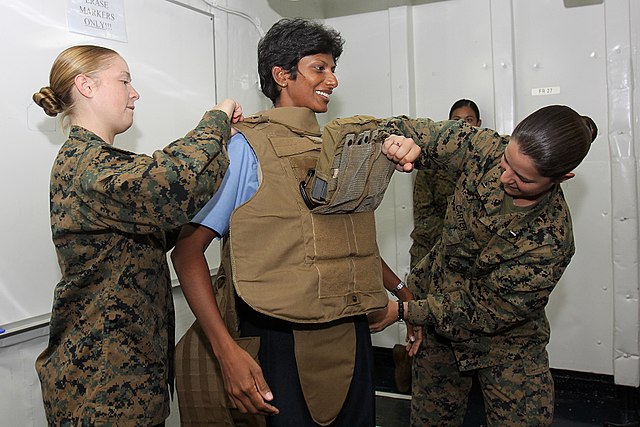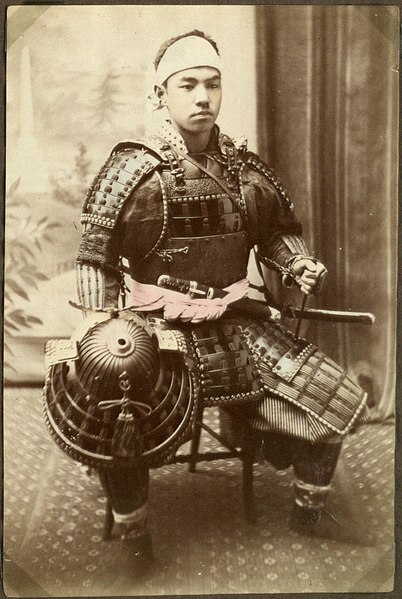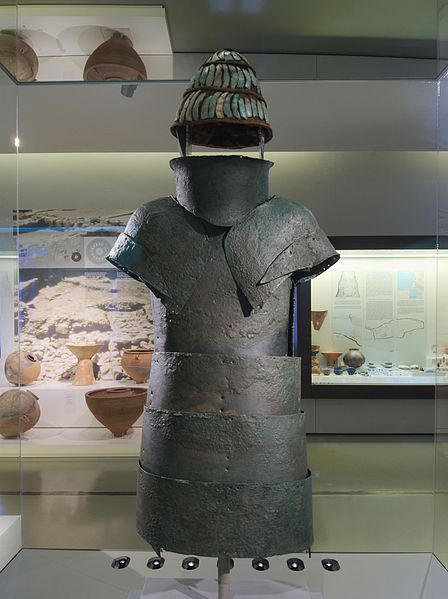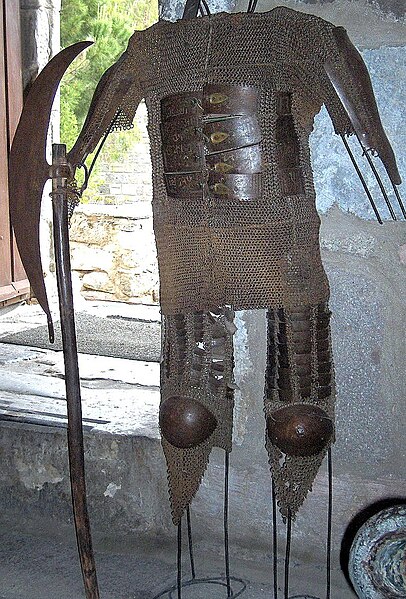A bulletproof vest, also known as a ballistic vest or a bullet-resistant vest, is an item of body armour that helps absorb the impact and reduce or stop penetration to the torso by firearm-fired projectiles and fragmentation from explosions. The vest may come in a soft form, as worn by many police officers, prison officers, security guards, and some private citizens, used to protect against stabbing attacks or light projectiles, or hard form, using metallic or para-aramid components. Soldiers and police tactical units wear hard armour, either in conjunction with soft armour or alone, to protect against rifle ammunition or fragmentation.
The Improved Outer Tactical Vest (IOTV) in MultiCam, as issued to United States Army soldiers
Ned Kelly's ploughboard ballistic suit
Test of a 1901 vest designed by Jan Szczepanik, in which a 7 mm revolver is fired at a person wearing the vest
World War I German Infanterie-Panzer, 1917
Body armor, personal armor, armored suit (armoured) or coat of armor, among others, is protective clothing designed to absorb or deflect physical attacks. Historically used to protect military personnel, today it is also used by various types of police, private security guards, or bodyguards, and occasionally ordinary citizens. Today there are two main types: regular non-plated body armor for moderate to substantial protection, and hard-plate reinforced body armor for maximum protection, such as used by combatants.
United States Marines in July 2010 assist a Sri Lanka Navy sailor in trying on a Modular Tactical Vest
Japanese warrior in armor
Greek Mycenaean armor, c. 1400 BC
Turkish plated mail

